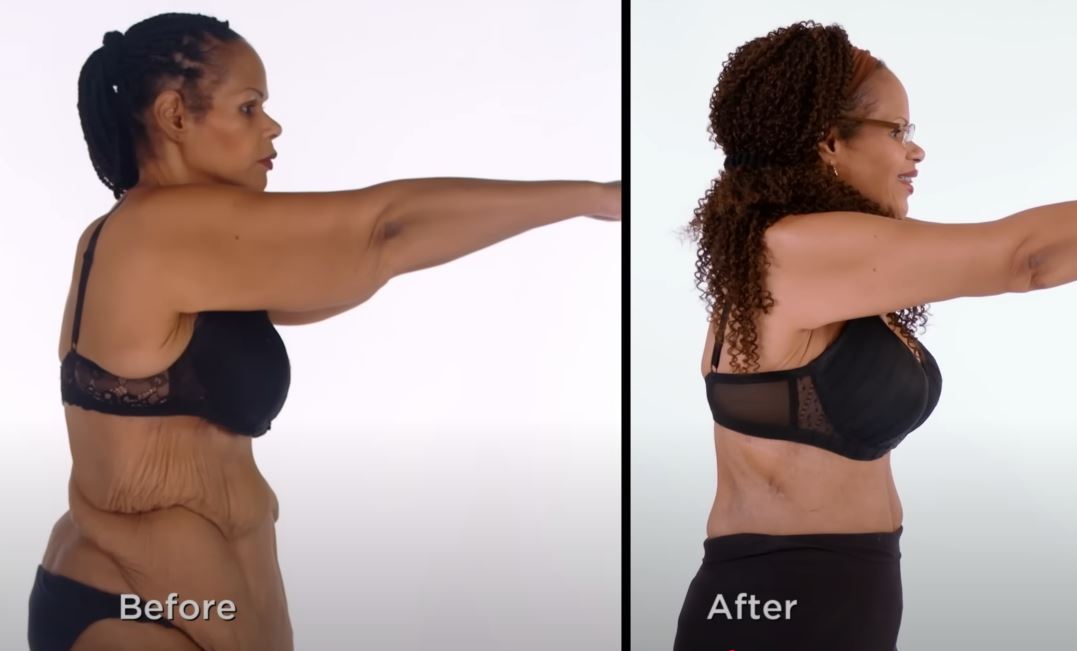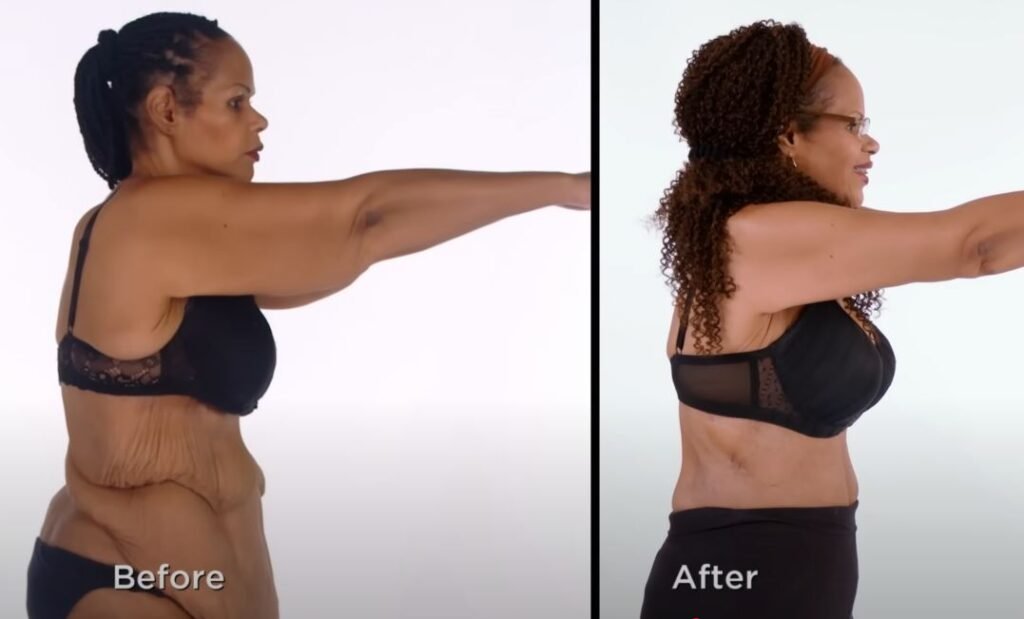

Although losing a substantial amount of weight is an impressive achievement, many people find that it is only half the fight. An unforeseen problem that frequently arises in the aftermath is loose, sagging skin that won’t go away. Surgery to remove excess skin, which is intended to improve comfort, mobility, and self-esteem, can be a game-changer in this situation.
This surgery is more than just cosmetic, despite what many people think. The sheer weight of extra skin can lead to emotional distress, persistent skin infections, and physical discomfort for many people. By eliminating the excess, body contouring surgery offers more than just a new appearance; it also gives one a new beginning, a new identity, and the capacity to completely accept their change.
Excess Skin Removal Surgery: Key Facts & Considerations
| Aspect | Details |
|---|---|
| What It Is | Surgical procedure to remove loose skin after major weight loss |
| Who It’s For | Those who have lost significant weight (typically 100+ lbs) through bariatric surgery or lifestyle changes |
| Types of Surgery | Panniculectomy, tummy tuck, arm lift, lower body lift, facelift, breast lift |
| Recovery Time | Typically 4 to 6 weeks, full results visible in 6-12 months |
| Cost | Ranges from $3,000 to $30,000, depending on the procedure and location |
| Insurance Coverage | Sometimes covered if deemed medically necessary (e.g., for infections, mobility issues) |
| Benefits | Improves comfort, confidence, skin health, and clothing fit |
| Risks | Scarring, infection, swelling, nerve damage, and potential revision surgeries |
| Longevity of Results | Lifetime results if weight remains stable |
Why Do People Get Too Much Skin?
The skin stretches to make room for the increased volume when the body gains weight. Collagen and elastin fibers eventually lose their capacity to regenerate, particularly if the weight gain persisted for a number of years. Loose, hanging folds remain after the excess weight is gone because the skin is not elastic enough to completely shrink back.
Those who have had bariatric surgery or lost more than 100 pounds are especially likely to experience this. For them, getting rid of extra skin is about more than just appearances; it’s about enhancing their quality of life and lessening the physical strain of having extra skin on a daily basis.
Types of Surgery for Excess Skin Removal
Various techniques focus on particular body parts to produce a balanced, natural-looking result:
- A panniculectomy is the removal of extra skin from the lower abdomen; this procedure is frequently required by medicine because of hygienic concerns.
- Tummy Tuck (Abdominoplasty): This procedure removes extra skin while tightening the abdominal muscles.
- Brachioplasty, also known as an arm lift, removes loose skin from the upper arms, which is sometimes called „bat wings.”
Thigh Lift: Addresses the drooping skin on the inside and outside of the thighs.
- Lower Body Lift: Provides a dramatic makeover by removing skin from the thighs, buttocks, and waist.
- Breast lift, also known as mastectomy, gives the breasts a firmer shape by tightening the breast tissue and removing sagging skin.
- A facelift (rhytidectomy) gives the face and neck a more youthful appearance by reducing skin laxity.
- To get proportionate and natural results, people who have undergone drastic weight loss may require several procedures.
Anticipate: The Recuperation Procedure
Surgery to remove excess skin is a serious procedure, and recovery calls for perseverance and dedication. The majority of patients encounter the following:
- Bruising, soreness, and swelling are common during the first few days. Prescription drugs are used to treat pain. Drainage tubes are necessary for certain patients in order to avoid fluid accumulation.
- Weeks 1-2: There is very little physical activity. The majority of patients require help with everyday duties.
- Weeks 3–6: Stitches are taken out, and mobility progressively gets better. Depending on their line of work, patients can resume their jobs.
- Months 3–12: The scars start to fade and the final effects become apparent. It can take up to a year to fully heal.
- Expert surgeons carefully position incisions in areas that can be hidden, even though scarring is unavoidable. Scars become softer and less obvious with time.
How Much Does It Cost?
The cost varies based on the procedure, surgeon expertise, and geographic location. Here’s an estimate:
| Procedure | Cost Range |
|---|---|
| Panniculectomy | $8,000 – $15,000 |
| Tummy Tuck | $6,000 – $12,000 |
| Arm Lift | $3,500 – $8,000 |
| Lower Body Lift | $10,000 – $25,000 |
| Thigh Lift | $5,000 – $10,000 |
| Breast Lift | $4,000 – $8,000 |
The Psychological and Emotional Effects
Excess skin serves as a constant reminder of one’s previous weight for many people. It has an impact on interpersonal relationships, social interactions, and self-esteem.
In addition to offering physical relief, excess skin removal surgery also releases emotional tension. Patients report feeling lighter, more self-assured, and at last content with their change.
„I hid behind oversized clothing for years,” one patient revealed. I feel like the person I’ve worked so hard to become after having surgery.
Conclusion: Is It Valuable?
Surgery to remove excess skin can change your life. It helps people move more freely, regain confidence, and accept their new bodies completely.
This procedure may be the last step toward regaining one’s identity and health for people who have put in a lot of effort to reduce their body weight but still feel constrained by extra skin. Even though it takes time to recover, money, and dedication, the advantages frequently exceed the difficulties.
To discuss your options if you’re thinking about the procedure, speak with a board-certified plastic surgeon.
FAQs on Excess Skin Removal Surgery
1. Does excess skin removal surgery leave scars?
Yes, but scars fade over time and can be minimized with proper care.
2. Can insurance cover excess skin removal?
It depends. If the surgery is medically necessary (e.g., preventing infections), insurance may cover it.
3. How painful is the recovery process?
Pain is manageable with medication. Most patients report discomfort for the first few weeks.
4. How long do the results last?
If weight remains stable, the results can last a lifetime.
5. Can exercise tighten loose skin instead of surgery?

